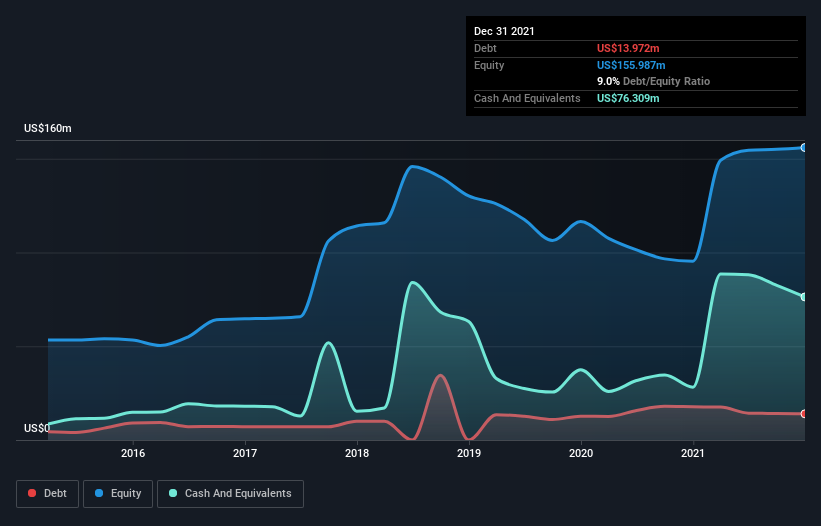Is Cantaloupe (NASDAQ:CTLP) Using Too Much Debt?
Warren Buffett famously said, 'Volatility is far from synonymous with risk.' So it seems the smart money knows that debt - which is usually involved in bankruptcies - is a very important factor, when you assess how risky a company is. As with many other companies Cantaloupe, Inc. (NASDAQ:CTLP) makes use of debt. But the real question is whether this debt is making the company risky.
When Is Debt Dangerous?
Generally speaking, debt only becomes a real problem when a company can't easily pay it off, either by raising capital or with its own cash flow. Part and parcel of capitalism is the process of 'creative destruction' where failed businesses are mercilessly liquidated by their bankers. While that is not too common, we often do see indebted companies permanently diluting shareholders because lenders force them to raise capital at a distressed price. Of course, plenty of companies use debt to fund growth, without any negative consequences. The first step when considering a company's debt levels is to consider its cash and debt together.
Check out our latest analysis for Cantaloupe
How Much Debt Does Cantaloupe Carry?
As you can see below, Cantaloupe had US$14.0m of debt at December 2021, down from US$17.7m a year prior. But on the other hand it also has US$76.3m in cash, leading to a US$62.3m net cash position.
A Look At Cantaloupe's Liabilities
We can see from the most recent balance sheet that Cantaloupe had liabilities of US$62.6m falling due within a year, and liabilities of US$16.5m due beyond that. Offsetting this, it had US$76.3m in cash and US$33.2m in receivables that were due within 12 months. So it can boast US$30.4m more liquid assets than total liabilities.
This short term liquidity is a sign that Cantaloupe could probably pay off its debt with ease, as its balance sheet is far from stretched. Simply put, the fact that Cantaloupe has more cash than debt is arguably a good indication that it can manage its debt safely. When analysing debt levels, the balance sheet is the obvious place to start. But ultimately the future profitability of the business will decide if Cantaloupe can strengthen its balance sheet over time. So if you want to see what the professionals think, you might find this free report on analyst profit forecasts to be interesting.
Over 12 months, Cantaloupe reported revenue of US$189m, which is a gain of 25%, although it did not report any earnings before interest and tax. Shareholders probably have their fingers crossed that it can grow its way to profits.
So How Risky Is Cantaloupe?
Statistically speaking companies that lose money are riskier than those that make money. And we do note that Cantaloupe had an earnings before interest and tax (EBIT) loss, over the last year. Indeed, in that time it burnt through US$643k of cash and made a loss of US$1.6m. However, it has net cash of US$62.3m, so it has a bit of time before it will need more capital. Cantaloupe's revenue growth shone bright over the last year, so it may well be in a position to turn a profit in due course. By investing before those profits, shareholders take on more risk in the hope of bigger rewards. When analysing debt levels, the balance sheet is the obvious place to start. But ultimately, every company can contain risks that exist outside of the balance sheet. For example, we've discovered 3 warning signs for Cantaloupe that you should be aware of before investing here.
If you're interested in investing in businesses that can grow profits without the burden of debt, then check out this free list of growing businesses that have net cash on the balance sheet.
Have feedback on this article? Concerned about the content? Get in touch with us directly. Alternatively, email editorial-team (at) simplywallst.com.
This article by Simply Wall St is general in nature. We provide commentary based on historical data and analyst forecasts only using an unbiased methodology and our articles are not intended to be financial advice. It does not constitute a recommendation to buy or sell any stock, and does not take account of your objectives, or your financial situation. We aim to bring you long-term focused analysis driven by fundamental data. Note that our analysis may not factor in the latest price-sensitive company announcements or qualitative material. Simply Wall St has no position in any stocks mentioned.

